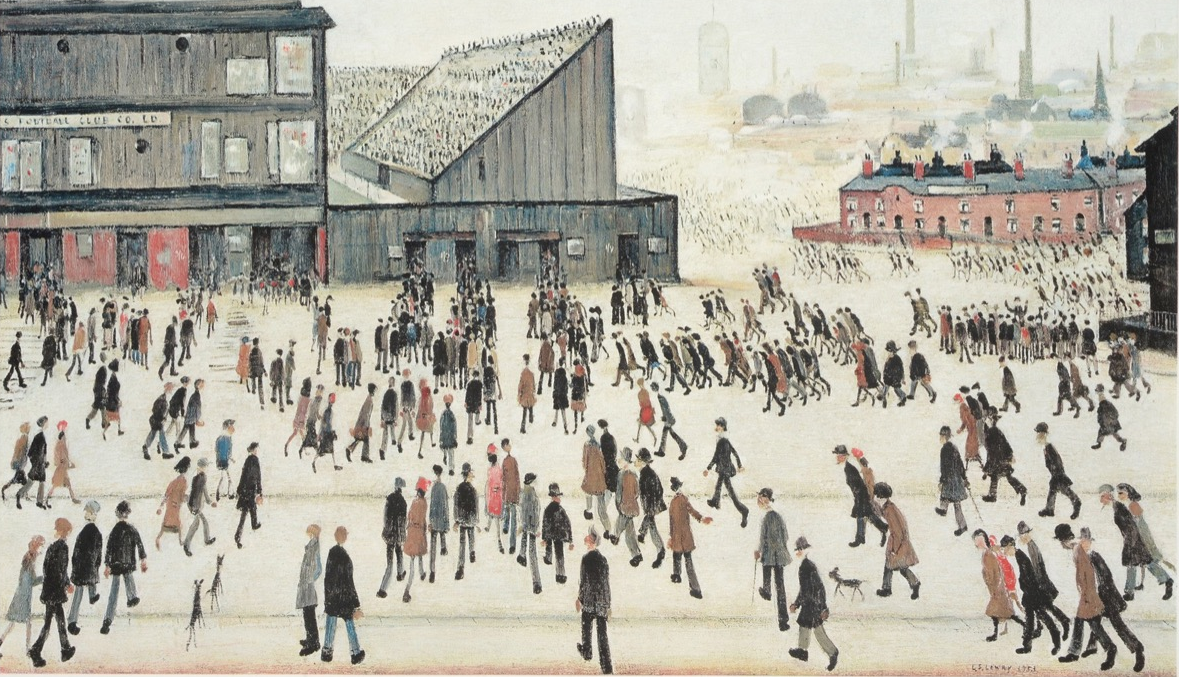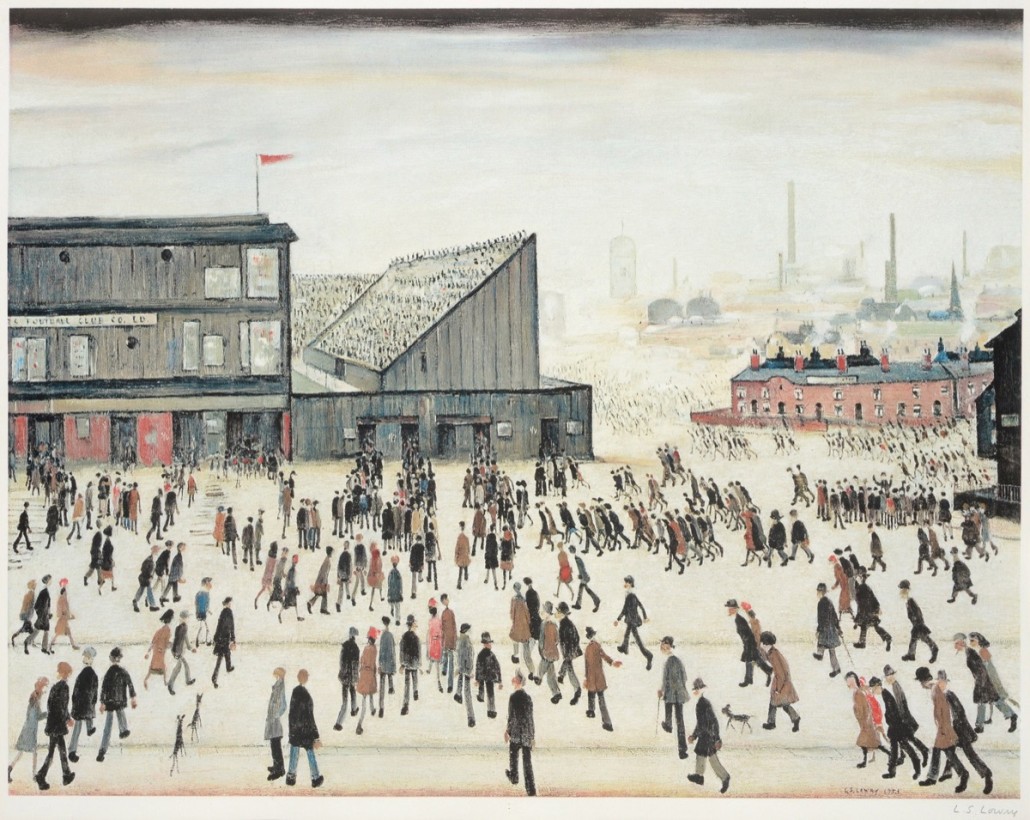
LONDON – It’s a brave man who admits his mistakes. More years ago that I care to remember, I wrote a collecting column pontificating about how the only people ever likely to make any money out of signed, limited edition reproduction prints by L S Lowry were the peddlers of the things (apart from the artist that is, he would have been paid for each print he signed).
As an investment, I believed they were akin to buying a Betamax video recorder. Remember them?
How wrong could one man get? Today, with the price of Lowry’s oil paintings soaring ever higher, those prints I trashed so readily are worth serious money.
In 1999, the Professional Footballers’ Association paid a then record £1.9 million at Sotheby’s for “Going To The Match,” Lowry’s depiction of hundreds of stick figure fans on their way to watch Bolton Wanderers play at Burnden Park. It can now be seen in The Lowry gallery in Salford Quays, Manchester.
In November 2015, a lithograph of the 1928 painting (shown above) sold for a record £22,000 at North Yorkshire auctioneers Tennants.
Christie’s hold the current world auction record for a Lowry painting, “The Football Match,” sold in 2011 for £5.6 million. The Lowry is currently selling a print of the same picture for £25.
Alexandra Gill, Head of Prints, there said: “As prices achieved at auction reach ever higher prices for works by iconic masters so they becomes less attainable to more and more collectors.
“L S Lowry has a loyal following of collectors and enthusiasts and as the value of his paintings continues to rise, his popularity increases with it. Lowry made just a handful of lithographs, each individually signed by him and numbered from small editions. With values ranging from a few thousand pounds this gives the Lowry lover a chance to own a work signed by the great master.”
So, what’s driving the market for Lowry’s prints? Is it really the case that all collectors are really buying is a pencil signature on what are basically high quality copies of his paintings?
First we need to compare like with like. Unlike a photographic print, a lithograph is a copy of an original work created either by the artist himself or by another skilled craftsman.
The process is laborious, time-consuming and produces usually only small runs of copies, usually in editions of around 300. The printing process works on the principle that oil and water do not mix.
The picture to be reproduced is redrawn in a mirror image in greasy or waxy crayons on the surface of a smooth stone tablet or metal plate to which oil-based ink is applied. The crayon lines and shapes attract the ink.
When water is applied to the plate, it wets only those areas that are ink free, and dispels the ink where it is not required, helping define those areas that create the image. It also prevents smearing when the plate passes through the printing press.
First black, then red, yellow and blue inks are applied in subsequent passes through the press to create a colored image, but this requires the paper to be placed in exactly the same position for each pass. It also causes the image to be slightly indented into the surface of the paper, effectively creating a border around it, which is a particular feature of a lithograph.
Color reproduction prints of Lowry’s paintings are altogether different. They are produced mechanically and most have only a decorative value, such as those sold at The Lowry. Around 50 others, however, were made under the auspices of the trade associations, such as the Fine Art Trade Guild among others, ensuring that limited editions were truly limited to the numbers stated.
Towards the end of his life – he died in 1976 – Lowry was approached by publishers seeking his permission to reproduce his pictures and for a fee, he signed each of them. Just as the value of his paintings and subsequently his lithographs have spiraled, so too now are these signed, limited edition colour reproduction prints.
Five of them were offered in a sale at Nantwich, Cheshire, auctioneers Peter Wilson last month. The most of them, Lowry’s view of Salford’s historic Peel Park painted in 1944, was published in 1975 and sold for £4,500, more than twice the guide price.
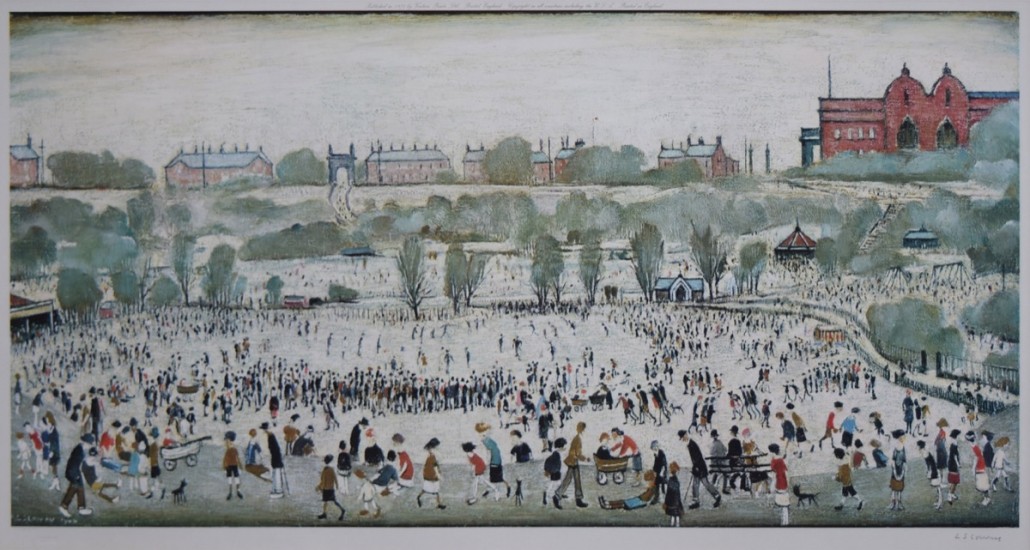
It was followed by “Group of Children,” number 656 from an edition of 850, which sold for £4,200 against an estimate of £1,000-1,500 and “Man Holding Child,” which was estimated at £2,000-3,000, but sold for £4,000. Both are shown below.


Most affordable were “St. Simon’s Church,” signed and numbered 176/300 at £2,800; and “Landscape with Farm Buildings,” £2,700, both shown below. Each doubled its estimate.
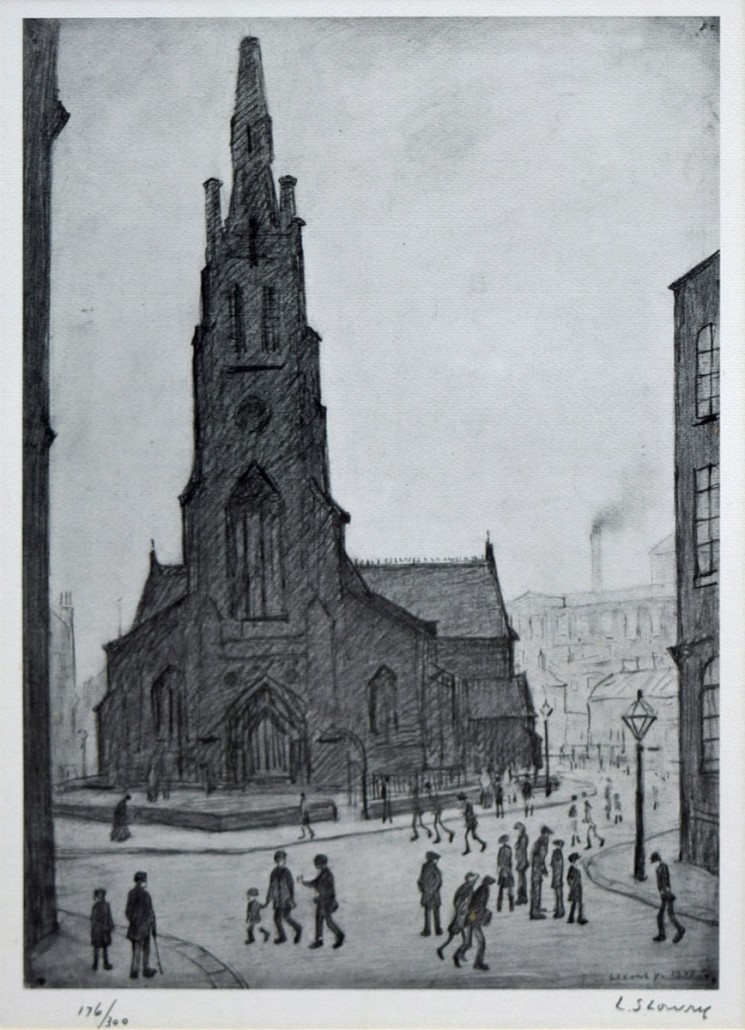
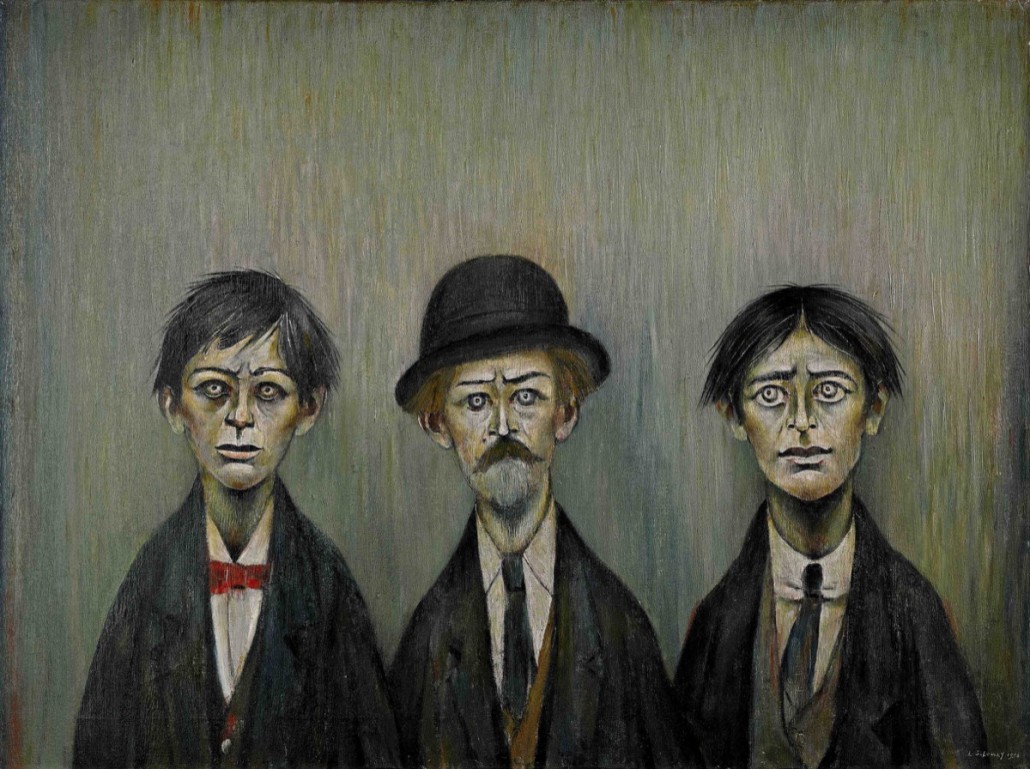
Is this a bubble that’s about to burst? Who knows – I’ve stopped making predictions.
One man who knows a good investment when he sees one is entrepreneur and art collector Frank Cohen (72) the man dubbed “Manchester’s Saatchi”. He started as a market trader selling wallpaper from an old ambulance, but made billions by founding the Glyn Web Home Improvements chain of stores, which he sold in 1997.
In November 2015, he trousered £1.35 million less commission when his iconic 1950 Lowry triple portrait sold at Sotheby’s. The price was an auction record for a Lowry portrait.
Speaking before the sale, he said: “I’ve always championed Modern British art and I passionately believe that Lowry ranks alongside other great painters like Frank Auerbach, Francis Bacon and Lucian Freud. I’m not alone in that opinion.
“I bought ‘Father and Two Sons’ back in the late 90s as a present to myself after selling my DIY business. It was a lot of money at that time, but I couldn’t resist as it had always reminded me of the very first job I had after leaving school at 15.’
“I worked for Perring’s Furniture stores, which was run by Abi Stolberg and Louis Rosenblatt, as the ‘tea-boy’ in the offices, earning £2/14/7 a week. When the boss used to arrive at work – he was the clerk of the company – he’d walk in every morning with his bowler hat on, flanked on either side by two minders with winged collars.’
“That image stayed with me forever until I found this Lowry. This is a painting that reminds me of my youth, but I’m now getting on in life, so I’m thinking of the future.”
_________
By Christopher Proudlove


